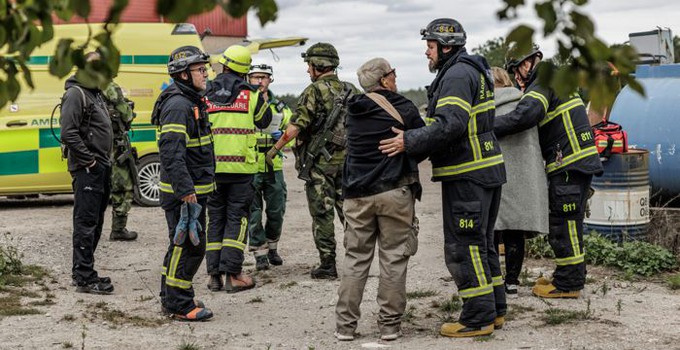
Photo: Jonas Helmersson, the Swedish Armed Forces.
Why is civil-military collaboration challenging?
In an article recently published in the scientific journal Defence Studies, researchers at the Swedish Defence University explore the factors that hinder civil-military collaboration in total defense.
The study examines Sweden's total defense strategy and inter-sectoral collaboration at the regional level to identify potential challenges. It is based on interviews and observations from various collaborative exercises.
"From our material, we have identified three overarching themes that complicate collaboration within total defense," says Aida Alvinius, Professor at the Department of Leadership and Management at the Swedish Defence University.
Three overarching themes
The inability to collaborate involves a lack of resources, unclear mandates, responsibilities, and authorities, and limited room for action due to legislation.
The unwillingness to collaborate is characterized by a lack of time, a lack of interest in total defense, and communication issues between different actors marked by mistrust, conflicts, and prestige.
The lack of coordination concerns the autonomy of the collaborating parties with different conditions, methods, languages, and rules, which fail to harmonize with each other.
Insufficient overall perspective hinders collaboration
"This lack of coordination is characterized by an insufficient overall perspective, marked by short-term solutions and a lack of knowledge about which actors can collaborate effectively. This creates ambiguity and exacerbates both unwillingness and inability," explains Aida Alvinius.
The themes identified pose significant challenges for collaboration within total defense, the article authors argue.
"The most concerning aspect may be the inability to handle fundamental problems even with increased resources and determination. Therefore, targeted efforts are required to eliminate these mechanisms of inertia," says Aida Alvinius.
"But once you start discussing these problems and can map them in your own organization, it becomes easier to find solutions to them," she continues.
Publication
Aida Alvinius and Erik Hedlund (2024): A colossus on clay feet? Mechanisms of inertia in civil-military collaboration within the context of Swedish total defense, Defence Studies.
Page information
- Published:
- 2024-08-22
- Last updated:
- 2024-08-22
Contact


